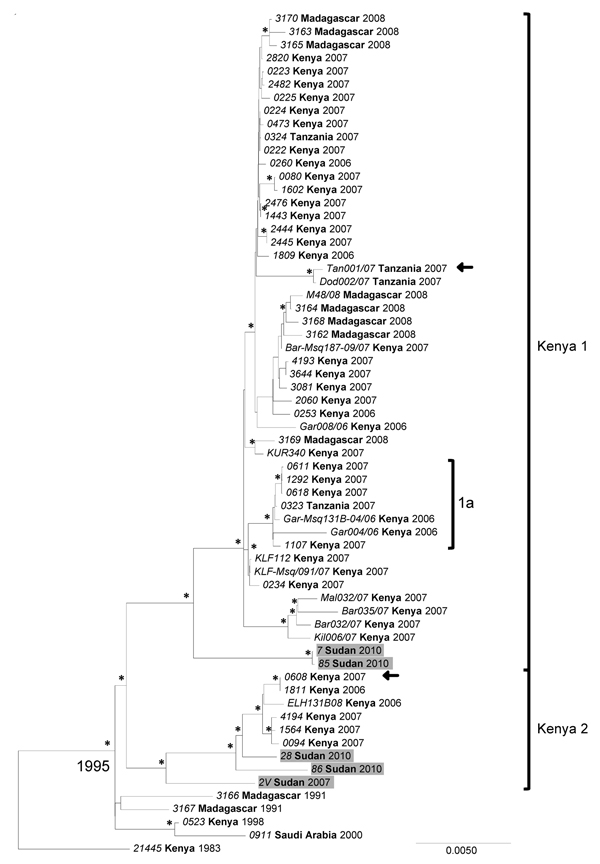Volume 19, Number 2—February 2013
Research
Rift Valley Fever, Sudan, 2007 and 2010
Figure 4

Figure 4. . Phylogenetic analysis of complete Rift Valley fever virus M (medium) segment sequences represented as an abbreviated maximum clade credibility tree. Asterisk indicates nodes with highest posterior density >0.95. Sudan sequences are shaded. Arrow indicates reassortant viruses. Scale bar represents substitutions per site per year. The complete tree is presented in Technical Appendix Figure 2. Country names appear in boldface, and strain names appear in italics.
Page created: January 22, 2013
Page updated: January 22, 2013
Page reviewed: January 22, 2013
The conclusions, findings, and opinions expressed by authors contributing to this journal do not necessarily reflect the official position of the U.S. Department of Health and Human Services, the Public Health Service, the Centers for Disease Control and Prevention, or the authors' affiliated institutions. Use of trade names is for identification only and does not imply endorsement by any of the groups named above.